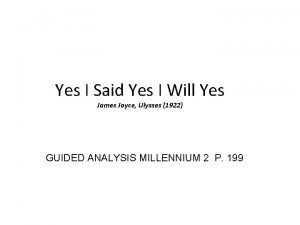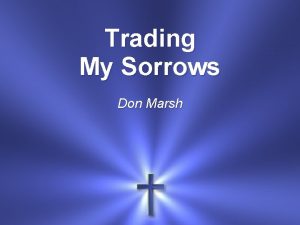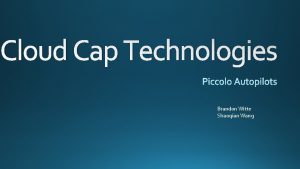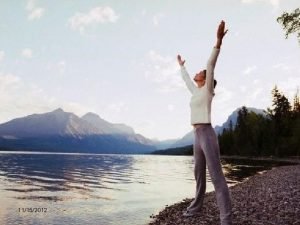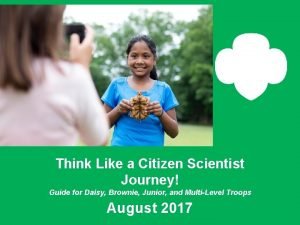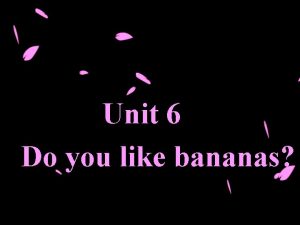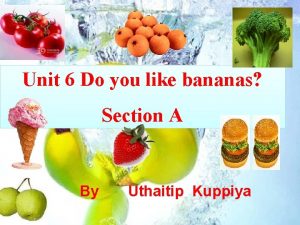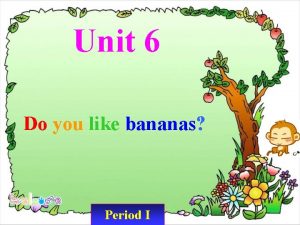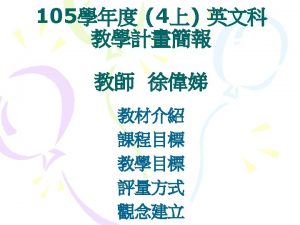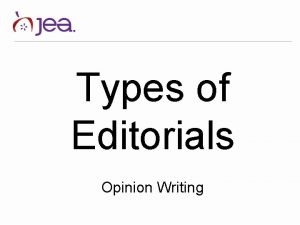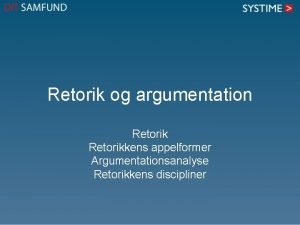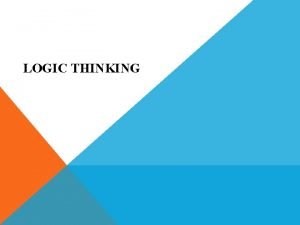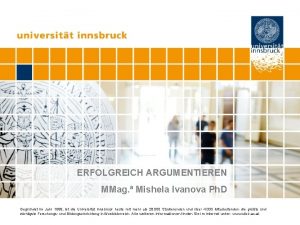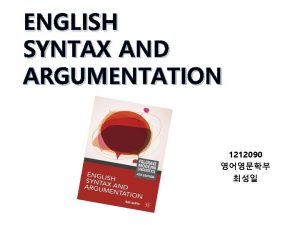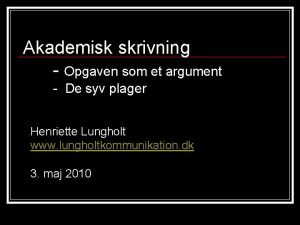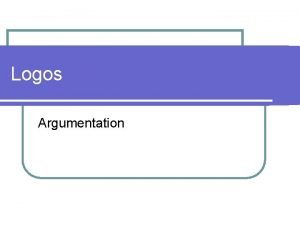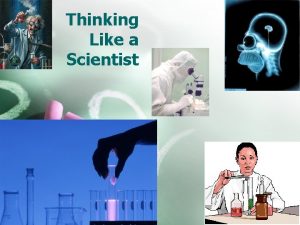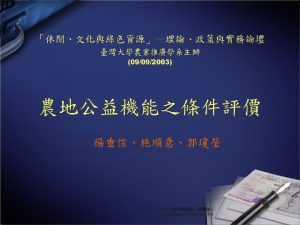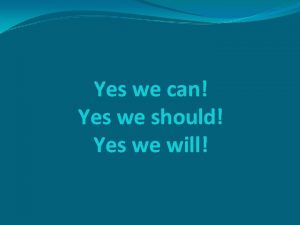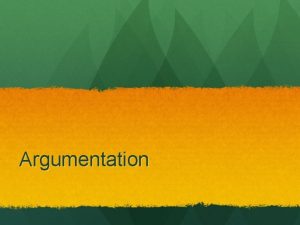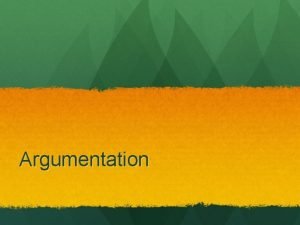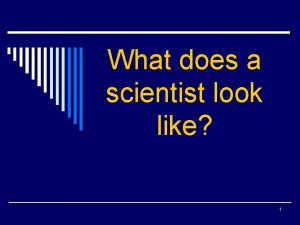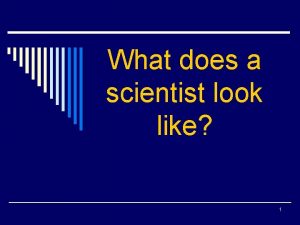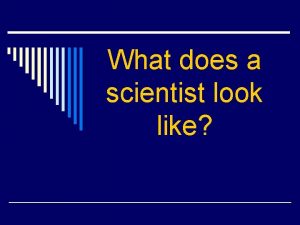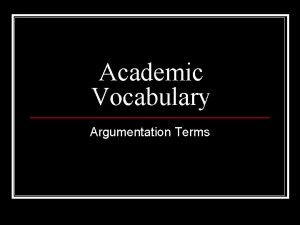Yes Argue Like a Scientist Supporting Student Argumentation
















- Slides: 16

Yes, Argue! (Like a Scientist) Supporting Student Argumentation from Evidence Teresa Barnett Executive Director Traci Grzymala Program Manager

NGSS: Science & Engineering Practices 1. Asking questions (science) and defining problems (engineering) 5. Using mathematics and computational thinking 2. Developing and using models 6. Constructing explanations (science) and designing solutions (engineering) 3. Planning and carrying out investigations 7. Engaging in argument from evidence 4. Analyzing and interpreting data 8. Obtaining, evaluating, and communicating information

NGSS: Science & Engineering Practices 1. Asking questions (science) and defining problems (engineering) 5. Using mathematics and computational thinking 2. Developing and using models 6. Constructing explanations (science) and designing solutions (engineering) 3. Planning and carrying out investigations 7. Engaging in argument from evidence 4. Analyzing and interpreting data 8. Obtaining, evaluating, and communicating information

Engaging in Argument from Evidence Primary School (K-2) Identify arguments that are supported by evidence. Distinguish between explanations that account for all gathered evidence and those that do not. Analyze why some evidence is relevant to a scientific question and some is not. Distinguish between opinions and evidence in one’s own explanation. Listen actively to arguments to indicate agreement or disagreement based on evidence, and/or retell the main points of the argument. Construct an argument with evidence to support a claim. Make a claim about the effectiveness of an object, tool, or solution that is supported by relevant evidence.

Model Lesson • First, make some observations What do you think is in the box? Is it living or non-living? Why? What does it look like? What does it sound like? What does it smell like? What do you already know about it? Where have you seen it before?

Model Lesson Today’s Question: Why do labybugs have spots? Find a Partner: • What do you know about ladybug spots? • Why might these animals have them? [Your claim] • What evidence do you have to support your claim?

Model Lesson Find another pair • One person begins by making a claim, supporting that with evidence. • Continue around the group, agreeing or disagreeing and citing evidence to support your claim. • “I think ____ because ____”

Model Lesson Group Discussion

Model Lesson

Model Lesson

NGSS Connections Science & Engineering Practices 1. Asking questions and defining problems 2. Developing and using models 3. Planning and carrying out investigations 4. Analyzing and interpreting data 5. Using mathematics and computational thinking 6. Constructing explanations and designing solutions 7. Engaging in argument from evidence 8. Obtaining, evaluating, and communicating information

NGSS Connections Crosscutting Concepts 1. Patterns – organization and classification 2. Cause and effect – mechanism and explanation 3. Scale, proportion, & quantity – recognize what is relevant 4. Systems and system models – define the system under study 5. Energy and matter – flows, cycles and conservation 6. Structure and function – determine properties of things 7. Stability and change – determine rate of change/evolution

NGSS Connections Performance Expectations K-LS 1 -1. Use observations to describe patterns of what plants and animals need to survive 1 -LS 1 -1. Use materials to design a solution to a human problem by mimicking how plants and/or animals use their external parts to help them survive, grow, and meet their needs 2 -LS 4 -1. Make observations of plants and animals to compare the diversity of life in different habitats

A Good Facilitator… • Provides a “hook” that builds on participants prior experiences • Creates an inclusive space • Uses questions to get students talking • Summarizes and highlights important information – Restating, “What I’m hearing is…” • Uses students’ terminology to clarify meaning & adds appropriate scientific terms as they arise • Acknowledges they don’t know all the answers – But encourages participants to explore further!

Tools to Facilitate Student Discourse Teacher tools: • Thoughtful prompts • Structured to match purpose/goals • “Talk Moves” Student tools: • Classroom norms for science talk • Hand signals • Talk tokens • Sentence frames

Thank you! We’re here to support you. WWW. CRSCIENCE. ORG
 Yes i said yes i will yes guided analysis
Yes i said yes i will yes guided analysis I m trading
I m trading Cloud cap technologies
Cloud cap technologies Yes yes lord amen
Yes yes lord amen Girl scout volunteer toolkit
Girl scout volunteer toolkit Do you like banana yes i do
Do you like banana yes i do You like bananas in french
You like bananas in french Do you like bananas yes i do
Do you like bananas yes i do Yes they like
Yes they like He likes bananas
He likes bananas Dorayaki
Dorayaki Types of editorial writing
Types of editorial writing Argumentationskneb
Argumentationskneb Deductive
Deductive De123rf
De123rf English syntax and argumentation 연습문제 답
English syntax and argumentation 연습문제 답 Forvægt og bagvægt
Forvægt og bagvægt
